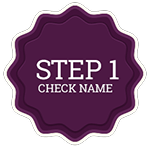Starting a Yoga Business

Company structure
First things first, you'll need to figure out what you want your company structure for your yoga business. Is it a not-for-profit organisation or a limited company? Are you an independent contractor working on a freelance basis? You'll have to decide the best structure for tax benefits are.
Compliancy
There are number of things you need to obtain to start your own yoga business. You need to be a certified yoga instructor regardless of whether you're starting your own business or working as an independent contractor. An internally recognised organisation to get this from is the Yoga Alliance. You'll also have to take a first-aid training course (you can get this from the Red Cross) and if you teach children, you'll need a CRB/DBS certificate.
If you're starting your own yoga studio, then the space you rent must have a D2 – this is specific for leisure usage in the UK. If the space doesn't have a D2, you will be shut down immediately.
Having insurance will help you in the long run. Whether you're freelancing or setting up your own studio, you'll want professional liability insurance. If you have your own studio, it'll be worth getting general liability, property and contents insurance. If you're going to have staff, make sure your insurance covers them too.
Remember, you'll need a business bank account to stay legal as well.
Planning
Financial
In your financial plan, you'll need to figure out the number of classes, private lessons and workshops you need to give to create revenue. Remember to consider your operating and equipment costs as well as your living costs. If you're an independent contractor, then you'll need to consider transport costs.
You may need to consider working part-time when you start or if you need to take a partner on if the load is too much.
Your budget may also reflect what type of yoga you will be teaching. For example, Bikram will be more expensive to run.
Remember to factor in holiday and sick leave.
Business plan
Running parallel to your financial plan is your business plan. Consider the type of yoga you're teaching and where you're teaching. For example, look into corporate companies, medical/healthcentres, schools, and other environments. It should be regularly revised as it is your main point of reference to the direction of your business.
Location
As mentioned before, location plays a huge role if you're starting your own yoga studio. Your venue needs to be D2 (see the compliancy section of this guide). Its physical location depends on the clientele you'll have. Your venue will also reflect what you want your clientele to feel; does it need to be calming? Consider a place with lots of natural light and so on.
Marketing
Your marketing material should span from digital to print. Think about leaving leaflets in schools, medical/health centres and police station. Don't be afraid to reach out to corporate companies.
End goal
Remember why you want to start up on your own. This will determine your company structure and the type of business you're going to be. It'll be integrated into your branding which will, in turn, encourage people to come to your business.
Extra tips
Beginnings
To get your experience jump started, you may want to begin on a freelance basis. You might be asked to work "off-hours" (e.g. 6am and 8pm). You could even become a dependable substitute to get things off the ground.
Software
You'll need to think what kind of booking software you're going to use. Would you like to have the function of booking online or people to email/call/come in person and you'll handle the bookings manually? It's up to you.
Student information
It's important to make your new students fill out and sign two forms (especially if it is a private lesson): a student information form and a liability waiver. The student information form should include information such as if they have done yoga before or not, if they do other sports/physical activities, any medical conditions and/or past injuries.






